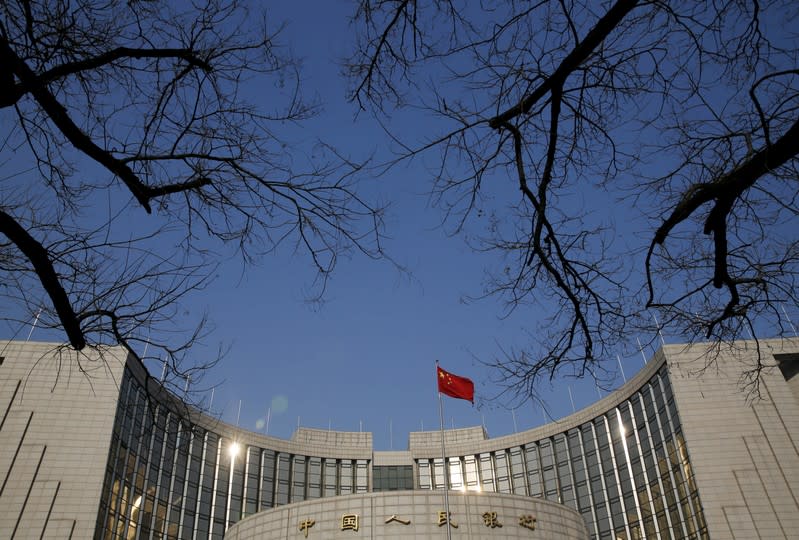China central bank injects 200 billion yuan to boost liquidity, keeps rate unchanged

By Winni Zhou and Andrew Galbraith
SHANGHAI (Reuters) - China's central bank extended 200 billion yuan (£22 billion) through its medium-term lending facility on Friday, the second time it has done so this month, while keeping the lending rate unchanged.
The move to add long-term funds caught the market off guard as the central bank had already injected funds last week. Several traders said the cash injection was likely a response to tighter liquidity in the interbank market from late Thursday, which pushed up borrowing costs.
Nie Wen, economist at Hwabao Trust in Shanghai, said the fund injection via MLF loans was to make up for the shortfall in liquidity even after multiple reserve requirement ratio (RRR) cuts so far this year.
In the short term, high consumer inflation was keeping policymakers from immediately cutting interest rates, he said.
"But at least it has to release liquidity to support economic growth, especially after October's sluggish credit lending data," Nie added.
"Consumer price inflation is high, but the producer price index is still in a negative range. Companies' real borrowing costs remain high."
Markets are closing watching for any signs of liquidity stress after a government takeover of an Inner Mongolia bank and state-rescue of other small banks this year revived concerns about the health of hundreds of small lenders in the country as China's economic growth slowed to nearly a 30-year low.
The People's Bank of China (PBOC) said on its website on Friday the interest rate on one-year MLF loans <CNMLF1YRRP=PBOC> remained at 3.25%, the same as previous operation.
A trader at a Chinese bank said the MLF injection suggests the new lending benchmark - Loan Prime Rate (LPR) - is likely to follow with a 5 basis point cut next Wednesday.
Last week, the central bank cut the interest rate on MLF loans for the first time since February 2016, but only by a marginal 5 basis points. It also injected 400 billion yuan into financial institutions via the liquidity tool.
The volume-weighted average rate of the benchmark seven-day repo <CN7DRP=CFXS> traded in the interbank market - considered the best indicator of general liquidity in China - jumped to a high of 3.4% on Thursday. That was the highest level since Sept 30, a day before a week-long National Day holiday.
The seven-day repo rate fell to 2.7481% as of 0330 GMT on Friday morning.
The PBOC said the MLF loans and funds released from the second phase of a targeted RRR cut offset factors, including the tax payment period, to keep the banking system liquidity "reasonably ample".
Friday is the effective date for the second phase of a targeted reduction in commercial banks' official reserves that was announced by the PBOC in September.
The central bank usually conducts MLF operations when there is a maturity coming due, but there are no such loans or reverse repos maturing on Friday.
(Editing by Jacqueline Wong)

 Yahoo Finance
Yahoo Finance 